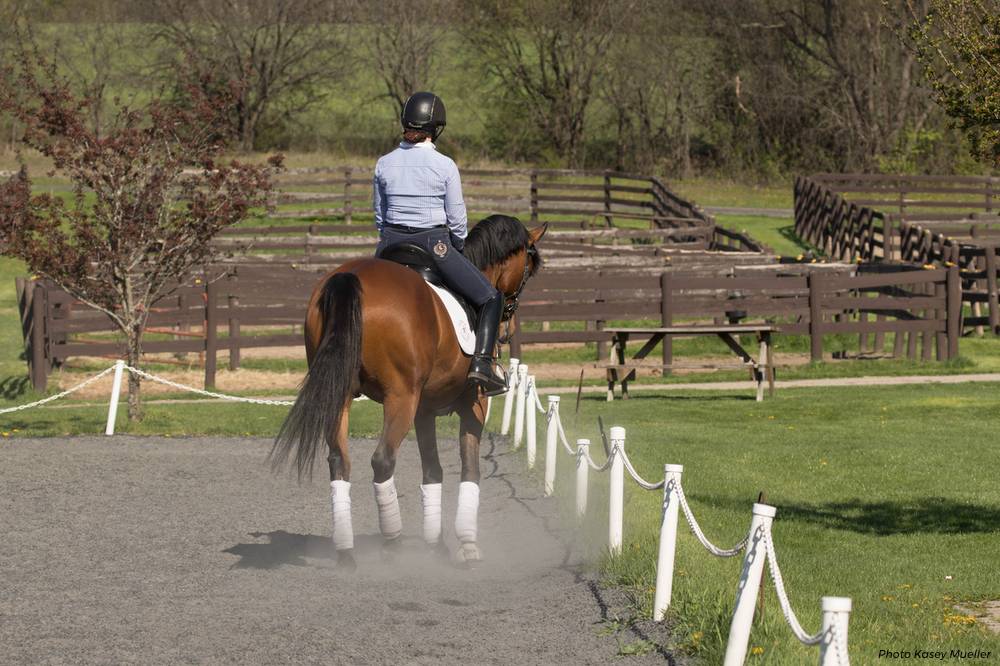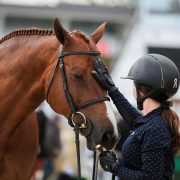Riding the Walk

By Rosie Simoes
Riders often focus on riding the trot and canter, leaving the walk overlooked. At each stage of training, this gait is important. Riders can use the walk to explain new ideas to the horse, develop suppleness and improve weaknesses for horse or rider.
A Forward, Marching Walk
The walk is a four-beat gait with eight phases that should exhibit overstep, looseness, and a slight nodding of the head. It is always important that the rider allows the horse enough freedom in the walk with a following elbow and hand so that he does not feel trapped. This is critical to prevent the horse from walking laterally.
Make sure to practice walking on a long rein. This is so important to promote looseness and range of motion in the horse. Ideally your horse should walk for 10 minutes on a loose rein in a forward marching walk with the nose down and out.

For horses that are nervous and do not like to walk, do not stress the walk. The more the horse progresses with training, the more rideable the walk will become. Some horses are hot at the start of a ride and sensitive to the legs. Remember, the bottom of the training pyramid begins with rhythm and relaxation. Sometimes it is best to work in trot and/or canter then walk on a long rein later in the ride.
Break Things Down

Use the walk to explain exercises to your horse for the other gaits. Introduce new lateral movements in the walk, such as half pass, shoulder-in, and haunches-in. Once the horse has mastered the idea at the walk, it will be much easier for him to understand it in a more ground-covering gait. Make sure the walk is always marching and active so the horse stays on the aids.
The Leg-Yield
The walk is the perfect gait to explain new exercises to the horse and to practice new exercises as a rider. The first lateral excise I teach my horses is the leg-yield. I begin teaching this on the long sides of the arena. Start by flexing the horse towards the rail and then applying your outside leg. When the horse yields from the pressure of the leg, reward him. The angle should be about 40 degrees. It is important that the horse’s front legs stay on the track while the hind legs travel to the inside of the arena.

Riding this exercise explains several things to the horse. The horse begins to understand the inside leg to outside rein concept. In this exercise the outside rein is opposite the of the flexion. He becomes straighter in his body alignment enhancing the suppleness of his body.
Once this exercise is understood, I begin leg-yielding the horse from the quarterline to the track of the arena.
Tips for Shortening the Reins in the Walk
When you shorten the reins to resume working and you find the horse is anticipating, begin working on simple exercises, such as shoulder-fore. This will prevent the horse from getting lateral in the walk before returning to work. Riding walk-halt transitions is sometimes helpful to get the horse on the aids as well. Keep a soft elbow and a hand that follows toward the mouth as you shorten the reins, and remember that practicing this often under-ridden gait can improve all aspects of training your horse.


